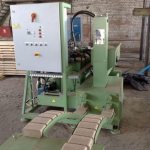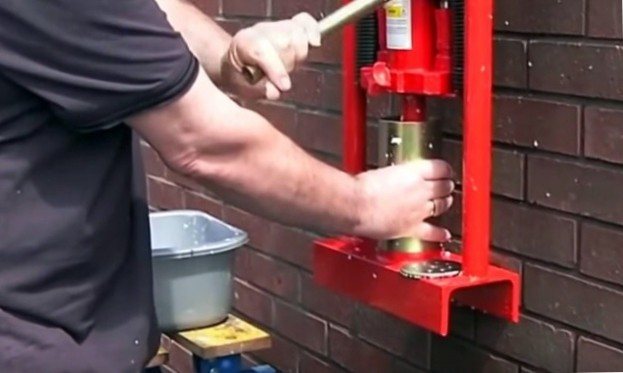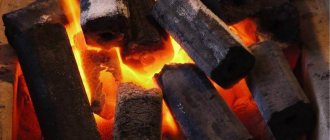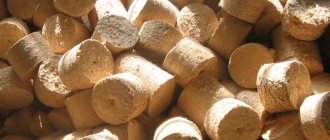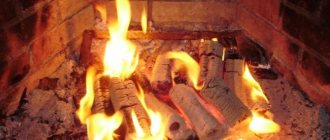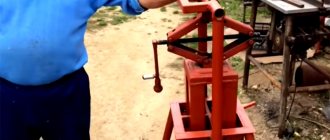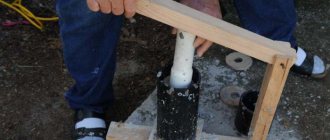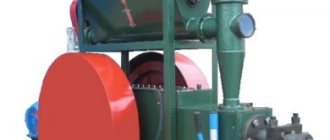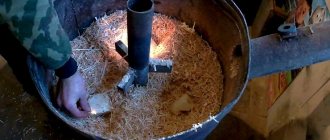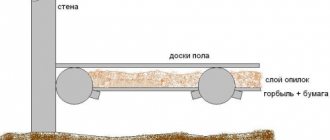The question arose: is it realistic to create briquettes from sawdust that can be used as fuel, for example, for a greenhouse?
Unnecessary materials can be found at any dacha. It can be:
- sawdust;
- boards;
- wood residues;
- straw;
- branches;
- coal waste;
- dry leaves;
- cardboard;
- paper.
All of these materials burn well, but to use them, you must first grind. To do this, you will need the machines designed for this. You do not need to make them yourself, ready-made devices are offered for sale by specialized stores.
For such work, a rotary machine is suitable, which with the help of knives is able to grind plant material. Its cost is available to any summer resident. This device is indispensable when you need to get fertilizers.
Such a machine can also be used to purchase fuel briquettes. However, they cannot do it alone, you need to have additional equipment.
Technological process
To make briquettes, you will need clay and, of course, sawdust. They are mixed in a ratio of 10: 1, water is added until the consistency of the solution becomes formative. It is very important that the clay, which is the main binding element, evenly occupies the entire volume of the sawdust.
You can mix the mixture by hand, but it is better to use a construction mixer. He will do this job quickly and efficiently.
A variety of materials are suitable for molding briquettes:
- boxes;
- discarded pots;
- any capacity.
The formation of the future fuel should be carried out by pressing the finished solution.
The last manufacturing step is drying. It's good when there is bright sunny weather outside, because briquettes dry very quickly in such conditions.
Properties of fuel briquettes
eurowood - fuel briquettes
Fuel briquettes are 4 or 6-sided timber with a through hole for smoke removal in the center. Diameter from 50 to 75 mm, hole diameter about 20 mm. The length is from 10 to 30 cm. Their density can reach 1200 kg per cubic meter with an ash content of less than 1%.
Fuel briquettes burn 3.5-4 times longer than wood. And in terms of calorific value, husk products are equal to coal (up to 5200 kilocalories per kilogram), sawdust slightly lower - 4200 kcal / kg. At the same time, the ash content in coal reaches 20%, in briquettes no more than 3%. Therefore, they are very convenient for lighting fireplaces, European stoves.
What machine can be used to make briquettes
Home craftsmen make such machines with their own hands. Briquettes are made in the form of bricks or round.
In such machines, the main element is the part that forms the briquette under high pressure.
Such a homemade press can have several types, in which various mechanisms are used:
- manual drive;
- jack;
- hydraulic drive.

The simplest is the manual mechanism. The welded frame is made of a steel profile tube. It is convenient to fix such a frame on the wall. At the bottom of the frame, a fixed shape is firmly attached, which can have a very different appearance, but more often a rectangular configuration is used. A long arm is attached to the top using a pivot joint. A pressure piece is connected to it, which enters the mold. A small gap is provided for its free movement.
In other versions, mechanized jacks are used, hydraulic drives that replace the lever. Small holes are drilled at the bottom so that the water can freely leave the mold during operation. You can get acquainted with the design in the video:
Raw materials for eurowood
To create such products at home, all kinds of organic waste (vegetable, agricultural) are used. Usually they use fallen leaves, tree branches, husks of cereals, dry plant stems, straw, sawdust, paper, cardboard, etc.
Now let's move on directly to the manufacture of Euro wood with our own hands. This process consists of several sequential stages:
- Stage 1. First, you need to clean the raw material from excess impurities and dirt, then mix it with dry clay powder in a ratio of 10: 1, where the last component will be 100 g, and the raw material - about 1 kg. Add a little water to the finished mixture and mix everything until smooth. The amount of liquid is determined by the ability of the mixture to mold, taking different forms, so the composition should not be too thick or sparse. In addition, the final density of the product depends on the amount of water. If you have added a lot of liquid, be prepared to take longer to dry. To improve the properties of the material during combustion, shredded cardboard can be added to the raw material.
- Stage 2. The resulting mixture must be put in special forms and pressed. In the process of pressing the raw material, it is required to squeeze out as much liquid as possible from it. The mixture must be left in the molds for a while to settle.


- Stage 3. The next step in making fuel briquettes is drying them. An option is possible using a special drying chamber or normal natural conditions. It is necessary to thoroughly dry the products, otherwise the finished product will turn out to be of poor quality. If the briquettes are not dry enough, they will not burn and crumble. To increase the strength of the product at the time of drying, they are laid with dry leaves, paper, wood chips.
- Stage 4. After the eurowoods have completely dried, you can start transporting them to warehouses or woodpiles. They are now usable.
Screw Press
It can be called the simplest one made by home craftsmen. The mixture is poured into a perforated molding container, after which it is placed under the bed. Tighten the screw slowly to apply the desired pressure. The principle of operation and the device of such a press are clearly visible in the figure presented.
It is much easier and faster to make "brick" briquettes on a home-made press, which uses a long lever and a system of "pushing" them out of the mold. To make the process faster, some summer residents weld two forms to the frame at once.
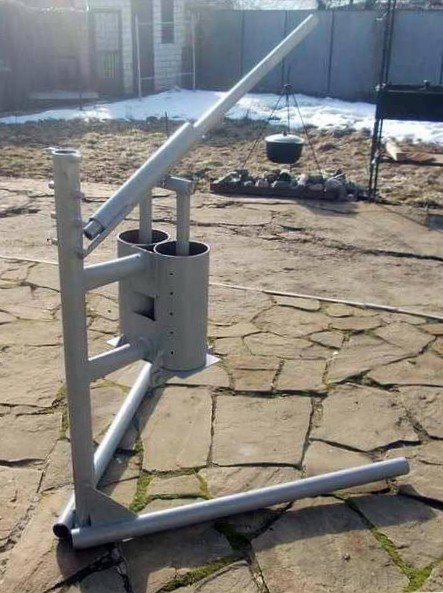

Not all craftsmen are satisfied with manual work. There is also improved mechanized equipment. For example, to make a sawdust briquette machine more efficient, the manual drive can be replaced with a hydraulic jack. Of course, the assembly of such a unit will require some effort, but the result will increase the efficiency.
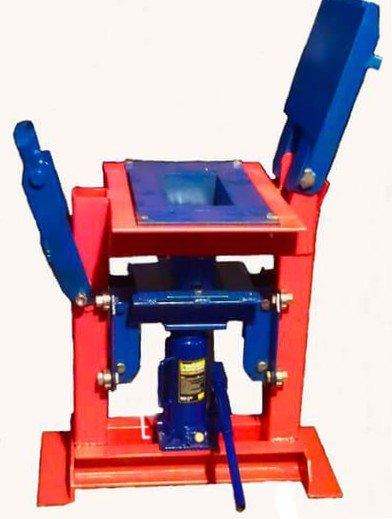

Even difficulties in the manufacture of parts do not stop the home craftsmen. They were able to independently make a screw press, on which the briquettes are of very good quality. However, it was costly to make the screw and body using high alloy steels.
For such a machine, an electric drive is required, the power of which must exceed 7 kW, and this is an additional financial investment.
Sawdust as solid fuel
This environmentally friendly and most economical type of fuel is of several types. One of them - chips and sawdust in bulk
... They are easy to obtain from woodworking factories where they are waste or if there is a carpentry shop nearby. Briquettes and pellets are made using a special press.This process with the help of simple devices can be adjusted at home.
The next type of fuel is pellets
... They are much more profitable than ordinary firewood (they burn longer, and the cost is several times lower). They are very convenient to transport and store. Pellets are small capsules (about eight millimeters in diameter) made of compressed sawdust.
In addition to pellets and loose sawdust, they are used for long-burning stoves fuel briquettes
... They are cylindrical, rectangular, six- and octahedral (Pini-Kei).
Benefits of using sawdust as fuel
- - Low fuel cost;
- - Convenience of storage;
- - Heat transfer and burning duration are higher than that of ordinary firewood or peat briquettes;
- - Pellets do not emit soot and toxic substances during combustion;
- - Combustion products remaining from burning sawdust - good fertilizer for the garden;
- - There is much less garbage from sawdust and pellets than from wood and coal;
- - Due to the fact that the sawdust is always dry, you can use it to light the stove at any convenient time, while firewood sometimes requires additional drying;
- - When burning fuel briquettes or sawdust, much less ash and ash is formed than when burning wood.
Disadvantages of using sawdust
The disadvantages include dust from sawdust, which can in rare cases cause an allergic reaction, as well as the fact that, if stored improperly, sawdust can ignite spontaneously. However, both of these factors are extremely rare.
How to make fuel briquettes for use in a long burning oven
To make sawdust briquettes you will need:
- - wooden beams, nails and a hammer for assembling the press;
- - two metal cylinders - molds for future briquettes;
- - sawdust;
- - water.
1. Pour sawdust into a deep container and mix with water until the consistency of thick sour cream.
2. From wooden beams we assemble a press according to the scheme. The principle lies in the leverage.
3.Wet sawdust is placed in a metal mold and pressed by pressing the handle of the wooden "machine".
4. Take the finished briquettes out of the mold and lay them out to dry.
Another similar way to make stove briquettes is to put together several wooden boxes with many cells, mix sawdust with water and a little clay, and hammer this mixture tightly into the cells of the boxes to let the water out. In a day, we take out the fuel briquettes and use them for their intended purpose.
Do-it-yourself Bubafonya oven on sawdust
Since the combustion temperature of sawdust is higher than the combustion temperature of wood, the walls of the fuel tank must be made thicker - at least 10 mm. And to ensure fire safety, the stove is installed on a foundation and equipped with a reflective screen, a water circuit, or the stove is covered with refractory bricks.
Furnace mounting material
- - a thick-walled barrel with a sealed bottom (or a used gas cylinder) for the furnace, it is advisable to choose a volume of about two hundred liters;
- - two pieces of metal pipes;
- - channel;
- - sheet metal;
- - grinder, to it stripping and cutting wheels;
- - a hammer;
- - welding machine and electrodes;
- - hacksaw for metal;
- - bricks and cement for the foundation.
Work must be carried out in accordance with safety regulations. In addition, work must be performed near the source of electricity.
1. Fuel tank
If a barrel or can is used, the top must be trimmed. To do this, use a grinder or a hacksaw for metal. According to the marking, the upper part is cut off, carefully making sure that the tool does not overheat, and the cutting line is even. The rest can be further used as a furnace lid.
In the event that the fuel tank is made by welding from sheet metal, it is pre-bent into a radius on a bending machine, then connected with a welding machine in the form of a cylinder. To this cylinder, a bottom of the appropriate size is cut from a piece of sheet metal and welded, observing the quality of the weld.
The diameter of the clamping circle should be slightly smaller than the diameter of the fuel tank. This will ensure its free movement in the furnace as the fuel burns. In the center of the pressure circle, a hole must be cut equal to the diameter of the supply pipe. After that, the channel is sawn into 4 equal sections and welded to the circle. This is necessary to increase the weight of the pressure wheel and provide additional structural strength.


The length of the supply pipe is calculated as follows: measure the length of the fuel tank and add from 20 to 50 cm to this value.
The supply pipe and the clamping circle are connected by welding.
It is necessary to make a damper on the pipe, with the help of which the amount of air entering the furnace will be regulated. The simplest shutter is a small metal circle with a steel bar handle for ease of use.
3. Discharge pipeline
To attach it to the firebox, markings are made on the top of the tank and a hole is cut out equal to the diameter of the outlet pipe. After that, the pipe is attached by welding. The pipe is connected to the main heating system by means of a clamp and heat-insulating material (fiberglass).
4. Cover
The lid is cut from a piece of sheet metal or a cut off part of the barrel is used for this. A hole for the supply pipe is cut in the center and handles are welded from bent metal rods.
To protect the stove from overheating and improve heat distribution, a sheet of metal - a reflector is welded to the outer part of the fuel tank (with small metal corners).
The foundation is laid out from two rows of refractory bricks.
How to drown "Bubafonya" with sawdust
Before placing sawdust in the "Bubafnya", a small diameter pipe is placed inside the combustion chamber. Sawdust is laid around this pipe, compacting them tightly.


When the sawdust is stacked to the very top, the pipe is pulled out. Thus, the sawdust is stacked in the furnace so that the resulting combustion products will be blown down by the air flow (draft) into the shaft formed by the pipe.
The sawdust is set on fire with a torch or matches, covered with a pressure disk, a lid, and for several minutes they observe the furnace, adjusting the gate valve gap and, accordingly, the draft and combustion intensity.
Thus, from the cheapest materials, a long-burning furnace with biologically pure fuel with an efficiency of almost 100% is obtained. The Bubafonya stove on sawdust is the best option for economical owners.
Hello dear readers and subscribers of Andrey Noak's Blog! Today I will tell you about environmentally friendly fuel - briquettes. In the country there is always waste from our own production of various things or just garbage (leaves, shavings, straw, husks, etc.), and of course they can be used. I will tell you how you can make fuel briquettes with your own hands.
This material is used for fireplaces, stoves or. For its production, you can take all burning waste that can be crushed and pressed. Woodworking waste (shavings, sawdust, wood chips, small boards), as well as agricultural waste (corn, straw, husk, sunflower) may be suitable. Sometimes charcoal and peat serve as a material.
It should be noted that this type of heating material is environmentally friendly, and in comparison with traditional types, it has high heat transfer rates and efficiency. Since there is a very small amount of moisture in them, they emit a small amount of smoke during combustion and quickly burn out.They are distinguished by the ability to burn without emitting sparks and maintain a constant temperature. Thanks to their ergonomic shape and small size, they can be conveniently folded and stored.
It is important to store in low humidity conditions, as the material has poor moisture resistance. It should also be transported with care due to sensitivity to mechanical damage.
Briquetting press RUF 600
The industry produces a special press RUF 600, which produces briquettes with dimensions of 150x60 mm.
Its application has several advantages :
- Low wear.
- Increased reliability.
- Low electricity consumption.
- High quality and dense briquettes.
- High performance.
- Continuous mode of operation.

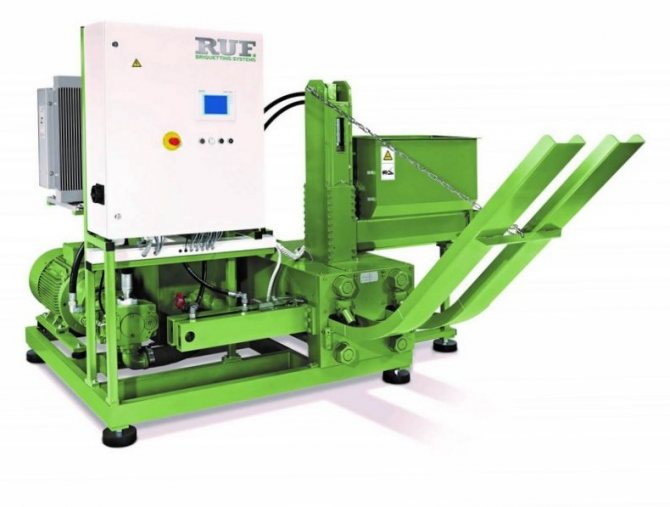
The RUF 600 model uses two-time hydraulic pressing. The material is used, the moisture content of which is from 6 to 14% without the addition of binders.
First, a slight pressure is created, due to which the material begins to be pressed due to the existing voids formed between the particles. After this, compaction and subsequent deformation of the particles themselves occur, a powerful cohesion is obtained at the molecular level.
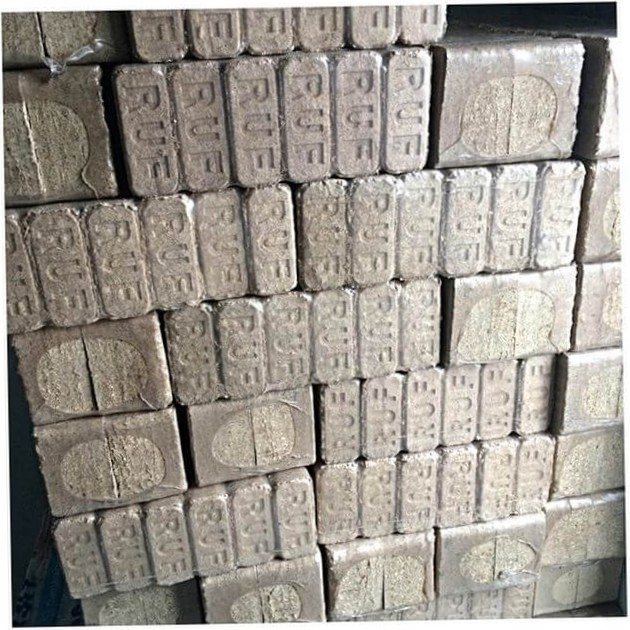

Due to the high pressure that is created at the end of the operation, the elastic deformation becomes plastic. As a result, the structure of the briquette becomes much stronger, the given shape is completely preserved.
Sawdust briquettes machine - YUXI
Machine tools and equipment
To ensure that biological waste is processed as efficiently as possible, special equipment has been created. In production, sawdust, straw, sunflower husks, dry grass of legumes, oilseeds are used as raw materials. The end product of processing is a continuous briquette, called Eurowood.
As a rule, the equipment for the production of briquettes is quite compact, even container factories have been created: everything you need is concentrated in one container on wheels.
Fuel briquettes are produced on the following types of equipment:
- dryers. Different types of dryers are required to dehydrate different types of raw materials;
- crushers. Hammer-type crushers are used more often;
- granulators;
- briquetting machines: this can be a production line or separate machines for processing sawdust or straw.
The choice of equipment for briquetting is very large. The most productive and functional are the lines that carry out all operations for the processing of raw materials and the manufacture of the final product.
Depending on the volume of production and the composition of raw materials, you can choose the right type of machine.
- Raw materials: small amounts of dry shavings and sawdust. RUF briquettes are made using a press. These are good quality fuel blocks that can be sold both domestically and abroad. Machines of this type are manufactured in Denmark, they are quite expensive, very productive and have a high resource. Analogues of RUF-presses are produced in the Baltics, they are slightly cheaper.
- Raw materials: small amounts of raw wood chips, sawdust and shavings. In order to make fuel briquettes from such raw materials, it is necessary to prepare it: dry it and grind it, and then press it. You will need: dryer, shredder, press.
- Raw materials: a lot of wet woodworking waste. It is most advantageous to purchase a complete line for the production of fuel briquettes. A high-performance press is required. Production efficiency is significantly increased if you take a couple of dryers to one press.
Raw material calibrator
It is necessary to screen out too large particles (more than 5 mm) on the crusher. Raw materials of suitable size are fed to a conveyor and from there to a dryer. The most convenient screw conveyors, their productivity can be from 1.5 to 10 cubic meters of raw materials per hour.
Dryers
The moisture content of raw materials is one of the most important parameters for obtaining high-quality briquettes. Electronic moisture meters are used to measure it.For dehydration of peat and woodworking waste in production, aerodynamic dryers - dispersers are widely used. Dispersers are convenient in that drying occurs due to hot smoke that is fed into the chamber. The dryer consists of air ducts, fan, cyclones, receiver, heat generator.
The combustion chamber is usually built of brick. A thermal sensor is installed to maintain the temperature. The capacity of dryers can be from 100 to 300 kg of raw materials per hour.
Presses
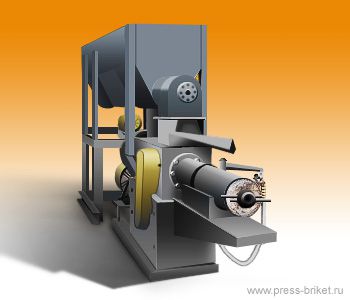

In production, universal briquetting presses are used for various types of woodworking and food industries (husks and husks of seeds and grain, sawdust). Raw materials are processed with a moisture content of 8 to 12%, with a particle size of no more than 5 mm. A knife is provided for separating the timber in the press. The screw speed is regulated. In addition, there is a thermal sensor system. Extruder presses operate at air temperatures above 5 degrees Celsius.
Under high pressure and temperature + 200-350 degrees Celsius, the raw material is pressed with a screw. The binder is a natural substance - lignin, which is present in the raw material. At high temperatures, the surface of the finished blocks melts and becomes solid. Therefore, they can withstand transportation, storage.
During the operation of the press, harmful gases are emitted, which are removed by means of an exhaust hood. Its design contains: air ducts, umbrella, fan, metal box. The diameter of the air ducts is selected according to local conditions.
Briquettes manufacturing technology
The heating material production process is laborious and requires sequential operations.
If necessary, you need to prepare raw materials before use:
- Crushing material;
- Drying of crushed raw materials;
- Grinding (the better the components of the briquettes are grinded, the higher the heat transfer rates).
For DIY manufacturing, raw materials must be mixed with a binder. For this, clay is quite suitable in accordance with 1 to 10, where 1 kg of clay and 10 kg of crushed material are taken. The resulting mixture must be mixed with water to form a homogeneous mass, it is important that it is neither liquid nor solid.
The resulting mass must be loaded into special equipment. When pressed, excess liquid comes out and the product gets its final shape. If you use a homemade press, then there is a possibility that a small amount of moisture will still remain inside the product.
An obligatory moment in the manufacture of heating material is drying after pressing. You can dry outdoors, under the sun and wind. The time of this stage depends on the volume of briquettes, as well as on the pressing technologies used.
After drying, the product must be moved to a special storage location or packaged.
The economic side of the coin
For the production of 1 ton of fuel briquettes, you need to take about 2 tons of wood waste or 1.5 tons of straw. At the same time, the power consumption is approximately 100 kW * h / t.
The calorific value of this heating product is 19 MJ / kg, which is much higher than that of ordinary firewood (only 10 MJ / kg).
With the right choice of equipment, manufacturing and storage of products, the technology pays for itself in about 2 years.
After reading my article, you can decide for yourself what is better: make heating material from unnecessary raw materials, save time and money, or continue to be heated with wood. Indeed, when using briquettes, you can both dispose of waste unnecessary in everyday life, and heat a summer cottage or a bathhouse with environmentally friendly fuel briquettes. If you want to organize your own production of pellets, then you just need information about the organization of the technological chain and my new book "Typical mistakes of equipment manufacturers when planning the production of pellets" will help you with this.


